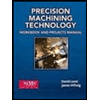An articulated robot loads and unloads a CNC machine tool. The cell is scheduled to produce a batch of 300 parts. Setting up the cell for this part style takes 30 min, programming the robot takes 75 min, and programming the CNC machine tool takes 55 min. For safety reasons, these three setup activities must be done sequentially. The programmed machining cycle takes 3.75 min. Cutting tools wear out and must be periodically changed, which takes 6.0 min every 20 cycles and is performed by a human worker. At the end of each machining cycle, the robot reaches into the machine and removes the just-completed part, places it in a parts storage carousel, then reaches for a starting work part from the same carousel and places it in the machine tool fixture. This sequence of handling activities takes 45 sec. The storage carousel holds 25 parts. At the beginning of the production run, it is full of raw work parts. As each part is retrieved by the robot, the carousel indexes one position to present a new raw part. The robot is programmed to place the completed part in the empty position in the carousel and take the next raw part. Periodically, workers visit the carousel to collect finished parts and replace them with starting work parts. This is accomplished without loss of production time. Determine (a) the average production time, (b) production rate of the cell, and (c) how many hours are required to complete the production run. (d) What is the proportion of the total time that the robot is working?
An articulated robot loads and unloads a CNC machine tool. The cell is scheduled to produce a
batch of 300 parts. Setting up the cell for this part style takes 30 min, programming the robot takes
75 min, and programming the CNC machine tool takes 55 min. For safety reasons, these three
setup activities must be done sequentially. The programmed machining cycle takes 3.75 min.
Cutting tools wear out and must be periodically changed, which takes 6.0 min every 20 cycles and
is performed by a human worker. At the end of each machining cycle, the robot reaches into the
machine and removes the just-completed part, places it in a parts storage carousel, then reaches
for a starting work part from the same carousel and places it in the machine tool fixture. This
sequence of handling activities takes 45 sec. The storage carousel holds 25 parts. At the beginning
of the production run, it is full of raw work parts. As each part is retrieved by the robot, the carousel
indexes one position to present a new raw part. The robot is programmed to place the completed
part in the empty position in the carousel and take the next raw part. Periodically, workers visit the
carousel to collect finished parts and replace them with
starting work parts. This is accomplished
without loss of production time. Determine
(a) the average production time,
(b) production rate of the cell, and
(c) how many hours are required to complete the production run.
(d) What is the proportion of the total time that the robot is working?
Trending now
This is a popular solution!
Step by step
Solved in 6 steps


